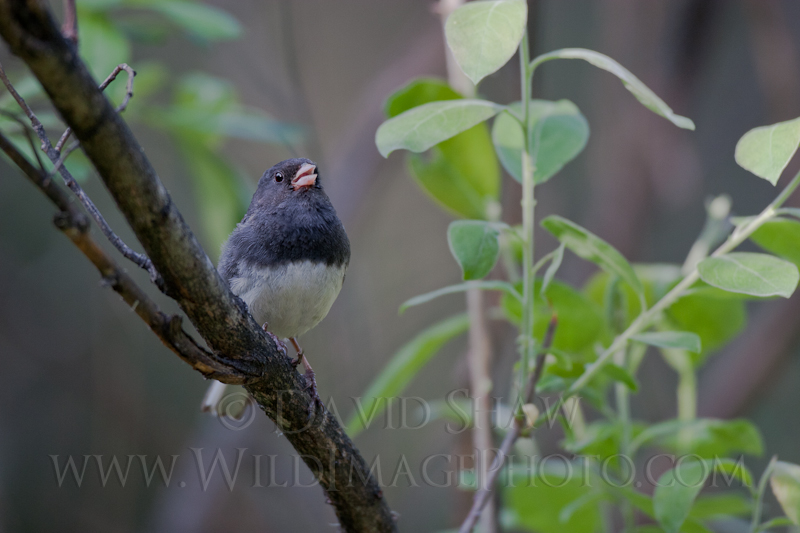These two images have a special meaning for me. The reason is that they represent the first shots from a major financial investment in my photography: the purchase of a Canon 500mm f4L IS lens. These were made on June 8, 2007. I’d saved up all the money I’d earned from guiding birders around Alaska, and the sales of a some images and articles. I’d yearned for this lens, spent days pouring over websites and dreaming of finally being able to afford it. And while I hate to emphasize gear, this lens brought my wildlife photography to an entirely new level.
Both images are of the same bird, made in my yard outside Fairbanks, Alaska. The top image a simple portrait, but the qualities of the lens are immediately apparent. The background is nicely blurred, while the bird and its perch are tack sharp. There is a nice highlight in the Junco’s eye. It does however suffer from the same problems as the image of the Blue-gray Tanager I featured yesterday. The bird’s head is almost perfectly in profile, and lacks an interaction with the camera. While I like the streaks of grass on the left side, the heavy contrast and rough texture of branches on the right are distracting.
Verdict: It’s a decent image, not compelling, but worthy of a place in my collection.
The second shot was taken just moments after the first. I like this image better than the previous one for this reason: the bird is singing. Action and behavior often take an image to a new level. The Junco is facing the camera with the head slightly cocked off to the right side of the frame. There is a good catchlight in the eye and he is nicely positioned in the frame. And while in previous images I’ve complained about the distracting forms of leaves in the background, this image benefits from those elements. The foliage provides a sense of the bird’s brushy-forest habitat. The perch is angled which adds a nice line moving through the image. And I like the gray of the distant background which is created by the trunks of distant spruces and the leaf-strewn forest floor. On the negative side, this image took a bit of work in post-production. The original had a very distracting twig that rose up right through the bird’s chest. However a few minutes with the clone tool in Lightroom and I was able to remove it entirely. Still, I prefer to make the perfect composition in the field rather than rely on post-processing. The original is also a bit dark. I accidentally underexposed this shot in camera, nothing that couldn’t be dealt with, but bumping the exposure did add noise, something I prefer to avoid.
The verdict: A solid image.


David, I really like this series of reflections on old photos. It’s teaching me a lot about photography.
Pingback: Avian Retrospective 4: Rusty Blackbird | Wild Imagination Journal